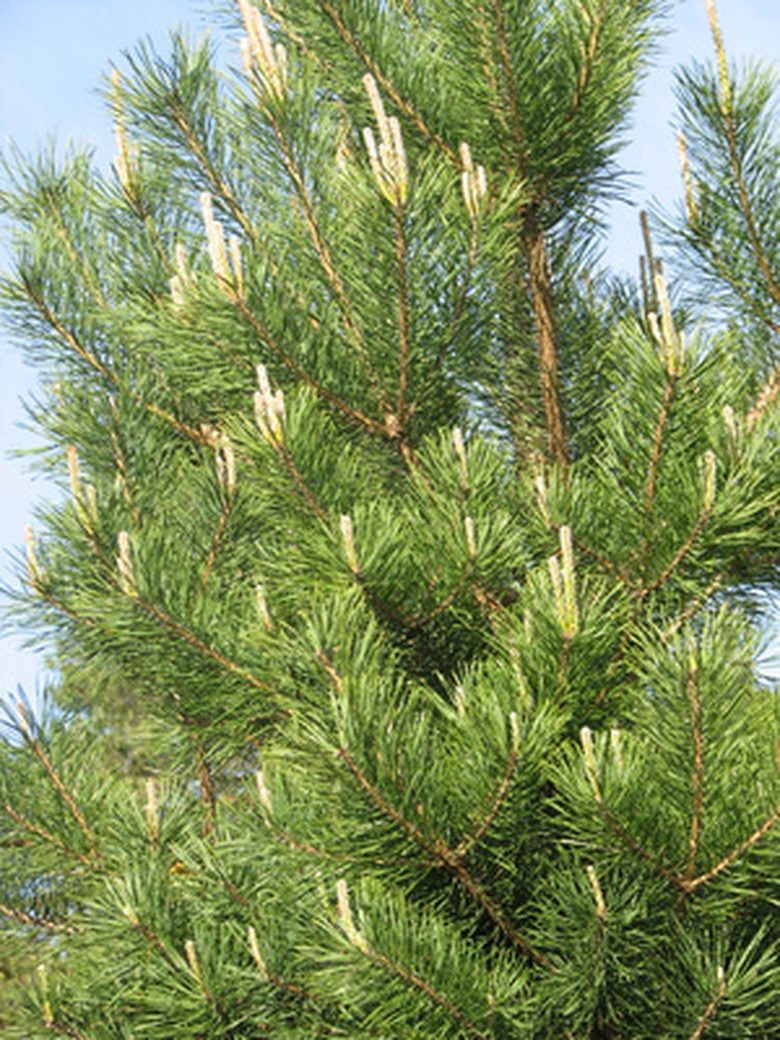Varieties Of The Japanese Spruce Tree
Several species of spruce are native to mountainous regions of Japan. These are large trees and are classified as conifers, which means they have cones similar to pine cones. Some varieties of the Japanese spruce occur in nearby parts of the world, and some live only in Japan. Some species, such as the Alcock's spruce, are becoming more rare as their habitat changes due to development and climate changes.
Maximowicz Spruce
This spruce tree is called Picea Maximowiczii in the botanical world. It is a rare tree that grows in the mountainous regions of Japan, specifically in the Chichibu Mountain Range, the Yatsugatake Mountains and Mount Senjogatake, from about 3,000 to 6,000 feet in elevation, according to Conifers.org. It's a large tree and can grow to nearly 100 feet in height. It is listed as "vulnerable," according to the World Conservation Monitoring Centre, which is part of the United Nations Environment Programme (UNEP). Because the environment to which this tree is native has been "degraded," the Maximowicz Spruce's population has been confined to "small and scattered" areas. The WCMC concludes that the regeneration of this species has been poor as a result.
- Several species of spruce are native to mountainous regions of Japan.
- It is a rare tree that grows in the mountainous regions of Japan, specifically in the Chichibu Mountain Range, the Yatsugatake Mountains and Mount Senjogatake, from about 3,000 to 6,000 feet in elevation, according to Conifers.org.
Tiger-tail Spruce
Picea torano is the botanical name of this Japanese spruce tree. It is also called hari-momi, bara-momi and the tiger-tail spruce. It grows to about 90 feet tall and is found in volcanic soils in mountainous regions on the Pacific side of Honshu Island, Shikoku and Kyushu. The elevation that supports this variety of spruce ranges from 1,200 to over 6,000 feet. Winters receive snow in these locations, and this spruce thrives here because of annual rainfall amounts of around 40 inches. A large population of this tree is found at Lake Yamanaka, at the base of Mount Fuji. No conservation status has been assigned to this species, according to Conifers.org.
- Picea torano is the botanical name of this Japanese spruce tree.
- A large population of this tree is found at Lake Yamanaka, at the base of Mount Fuji.
Alcock’s Spruce
Also called Picea alcoquiana and Shirane-matsuhada in Japanese, this spruce is represented by three similar varieties, all with the same genus and species name. All varieties grow to about 90 feet in height and have a straight main trunk with thin branches that spread outward. These spruces occur in forests that also support other conifers. They prefer volcanic soil on the Pacific side of Honshu Island in subalpine forests up to about 6,000 feet in elevation, where winters receive snow. The varieties known as Reflexa and Acicularis are listed as "vulnerable," but with stable populations. Fewer than five populations of each variety are known to exist.
